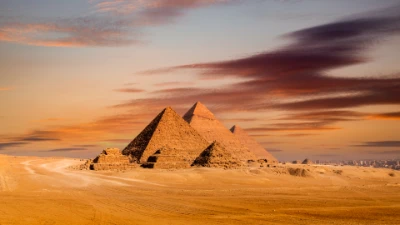The Colosseum
Often regarded as one of the Seven Wonders of the World, the Colosseum is an iconic specimen of the might and grandeur of the Roman Empire, drawing millions of tourists from around the globe each year. Celebrated both for its grand scale and impressive architecture, as well as its history and significance, the Colosseum remains a top world travel destination and offers visitors a glimpse into the glory of Rome in antiquity.
Historical Significance
You may feel a sense of awe standing before the massive Colosseum; let it wash over you as you marvel at the engineering and grandeur that is a testimony to the Roman Empire's prowess. The construction of the Colosseum began under Emperor Vespasian around 72 AD and was completed under his son Titus in 80 AD. With a capacity to seat approximately 50,000-80,000 spectators, this amphitheater was primarily used for gladiatorial contests, public spectacles, dramas based on Classical mythology, and historical re-enactments. These games were communal spectacles, used to entertain, show political goodwill, and demonstrate the emperor’s generosity and power.
Architectural Marvel
The architectural design of the Colosseum is a testament to the ingenuity of the Roman architects. Built from concrete and sand, it stands four stories high, with walls reaching a height of about 48 meters (157 feet). It was the largest amphitheater of the Roman Empire and remains the largest amphitheater in the world. The exterior of the Colosseum features series of arches and half-columns, completed in distinct Roman architectural styles: Doric on the first level, Ionic on the second, and Corinthian on the third. The fourth level consists of Corinthian pilasters and small, rectangular windows.
The interior reveals a complex design. An underground network of tunnels, fittingly called the Hypogeum, allowed for the seamless presentation of spectacles. These tunnels connected the Colosseum to nearby stables, barracks, and other facilities, enabling gladiators and animals to reach the arena floor swiftly. This intricate infrastructure was truly visionary for its time and adds to the appeal of the Colosseum.
Exploring the Colosseum
As a traveler, you have multiple ways to explore the Colosseum. Standard tickets allow access to the ground floor and the second level. However, for a more comprehensive experience, consider booking a guided tour. These tours usually include access to the arena floor, the Hypogeum, and the third ring, areas that are otherwise restricted. Standing in the Hypogeum, you can almost hear the hustle and bustle once exhibited when a spectacle would be in progress. From the third ring, you get a panoramic view of the Colosseum's interior and the city beyond, a sight that was strictly reserved for the emperors and elites.
Visiting the Colosseum at different times of day offers unique experiences. During the day, you can appreciate the architectural details and the vastness of this structure beneath the radiant Italian sun. Night tours, on the other hand, have a more atmospheric and enchanting quality as you explore the Colosseum under the moonlight.
Adjacent Sites to Visit
While the Colosseum itself is an awe-inspiring monument, the adjacent areas are also worth exploring. The Colosseum is just one part of the broader archaeological site, which includes the Roman Forum and Palatine Hill. The Roman Forum, once the political, religious, and commercial center of ancient Rome, is home to numerous ruins, including temples, basilicas, and public spaces. Palatine Hill, one of Rome's seven hills, holds much of the city's earliest history and offers a superb view of the Forum below.
Conclusion
The Colosseum is more than an icon of Rome – it is a symbol of the Roman lifestyle and its enduring impact on world history, arts, and culture. To truly appreciate its significance, one must walk its ancient corridors, marvel at the engineering genius it represents, and visualize the epic historical events that have unfolded here.
Don't rush your visit. Take the time to absorb the grandeur, the beauty, and the stories woven into the stone walls of this awe-inspiring structure as you travel back in time to the height of the Roman Empire. Considered amongst the greatest architectural feats in human history, visiting the Colosseum promises an enriching, unforgettable travel experience, as you bear witness to a beautiful merger of historical significance and architectural marvel.
Journeying through Time: Captivating Historical Sites Worth Traveling For

